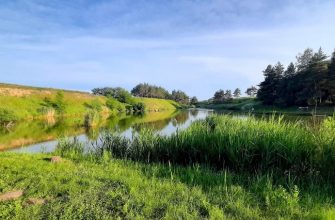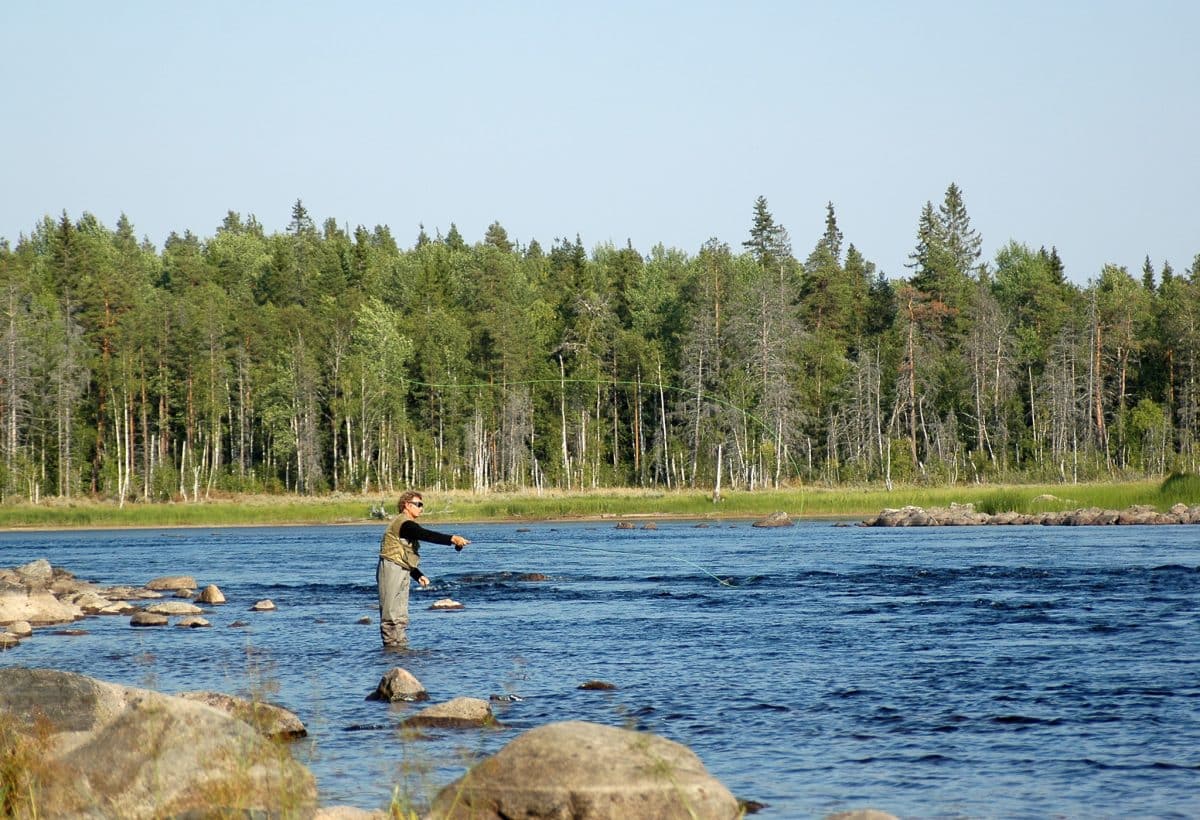In the Leningrad Region, pike perch lives in the Gulf of Finland, Lake Ladoga, Vuoksa, several rivers and a number of lakes. It should be said right away that if pike perch lives somewhere, this does not mean at all that it can be caught there even in small quantities. Zander is characterized by seasonal migrations and overwintering, and these processes depend on the reservoir in which the fanged predator lives. On the online map the reservoirs of the Leningrad region, where you can catch pike perch:
- The Gulf of Finland is the main pike perch fishing site in the Leningrad region
- What tackle and bait are needed to catch zander in the Gulf of Finland, in particular, on the dam and gunboat
- Lake Ladoga – searching and catching a fanged handsome man
- Fishing for walleye on Vuoksa is a real experience
- Rivers
- Lakes
- Поделиться ссылкой:
The Gulf of Finland is the main pike perch fishing site in the Leningrad region
Zander is especially abundant here, and it is active throughout the year to the delight of anglers. True, the size does not please him, as well as the multiple restrictions.
Attention! In the reservoirs of the Leningrad Region, it is allowed to take 5 specimens of pike perch with a length of at least 40 cm, and the length is measured from the end of the snout to the beginning of the tail scale cover. In addition, there are many restrictions on the places where you can fish and on the timing of the prohibition: in the Gulf of Finland from May 20 to July 1, in other bodies of water – from ice breaking until June 15.
The main places where zander is caught in summer are as follows:
- on the path : from Sestroretsk to Serovo along the northern coast, from Peterhof to the dam and from the dam to Lebyazhy along the southern coast. You can also fish in the Vyborg Bay;
- on silicone (foam rubber, mandulas ): the dam area from the northern and southern sides, Park of the 300th anniversary of St. Petersburg, the bay at the exit from the Kanonersky canal, Vyborgsky bay.
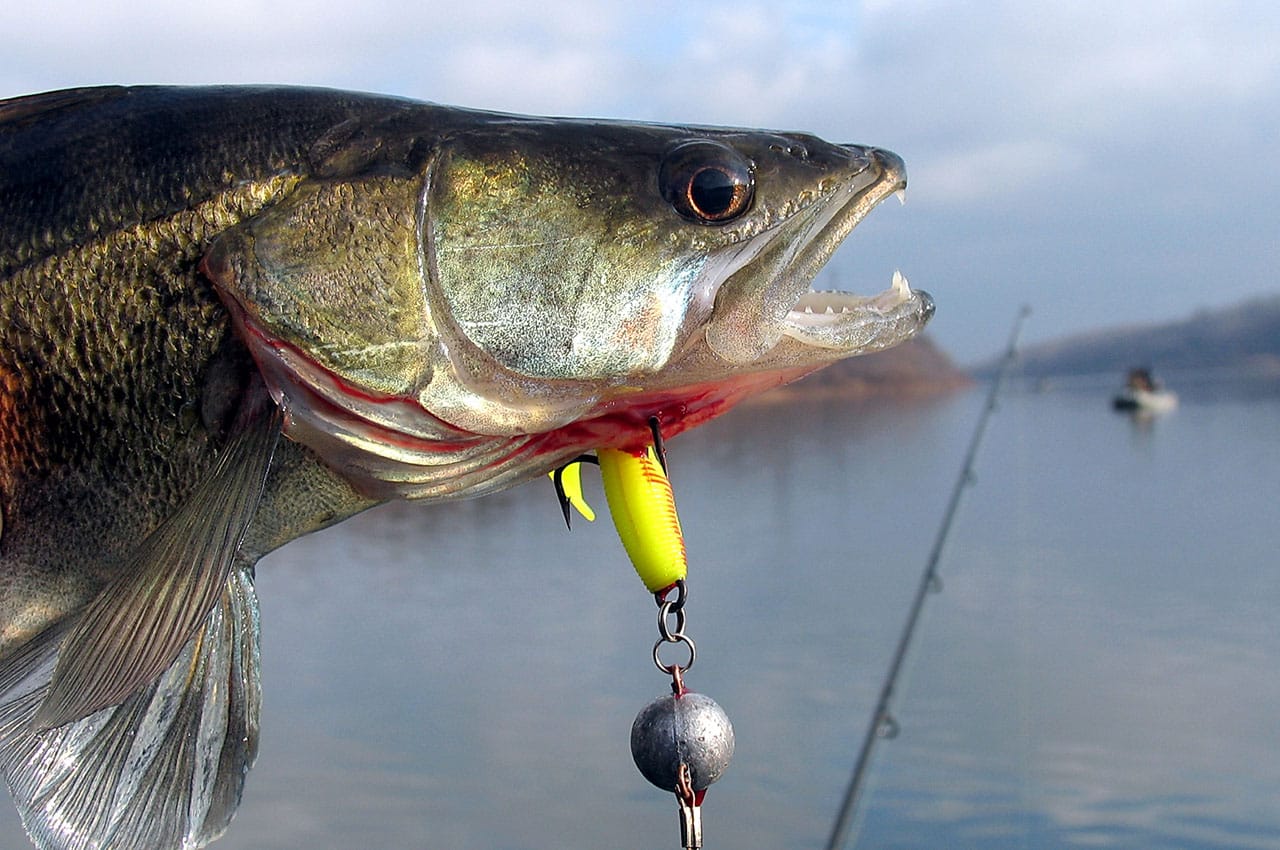
What tackle and bait are needed to catch zander in the Gulf of Finland, in particular, on the dam and gunboat
One set of tackles, no matter how hard you try to save money, is not enough. The fact is that currents of different strength and direction periodically appear on the dam. On what it depends, no one knows. As a rule, the current goes from the city to the sea, but it also happens vice versa. The flow can arise almost instantly, or it can gradually disappear in the same way. But the strength of the current can be different, so spinning rods of different power are needed
. One should be with top lure dough up to 28-35 grams. It is possible to overload the spinning a little, now all products are made with a safety margin. The second should have a top test on lures up to 56 grams. Those who use
baitcasting reelsare usually caught with even more powerful rods, since their casting distance does not depend on the thickness of the line. Now on sale there are budget spinning rods of fairly high quality. For the Kanonersky channel, rods with a test of 20-48 grams are required. The current there does not change so much and you can always choose the casting angle when the weight of the bait is enough.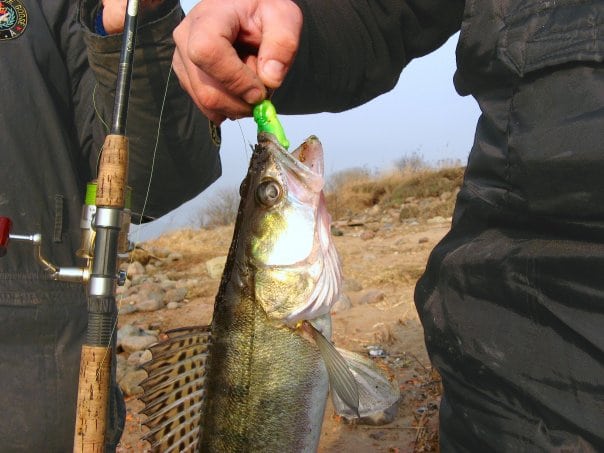 Pike perch caught in the area of the Kanonersky channel [/ caption]
Pike perch caught in the area of the Kanonersky channel [/ caption]
Important! If you are throwing the bait directly downstream, the weight of the load with the bait should be as large as possible. But sometimes it is better to cast sideways “for demolition” – this can provoke the fish to bite.
The next piece of equipment is a reel.
The spinning reel should be sized 2500-4000 according to the Daiva and Shimano classification. The reel requires the necessary power, smooth winding of the cord and good friction clutch performance. https://tytkleva.net/lovlya-xishhnoj-ryby/spinning/komplektuyushhie-i-montazh/kak-vybrat-katushku-dlya-spinninga.htm
Braided cord… The actual breaking load should be in the region of 8-10 kg. What is written on the packaging may have nothing to do with reality. If the seller permits, you can tie a regular knot, moisten it and pull the ends with force. If the cord breaks, then this is not what you need. But it is necessary to see that it is not too fat. Pulling a boat with an anchor on a line in case of a hook is also not an option. The cord should break, but under significant stress. Although it is often possible to swim up and try to unhook the bait.
Healthy! Swim to the opposite side of the hook and try to rip off the bait – this method sometimes works. But it is better to stand so that the cord goes into the water at a right angle and gently pull on it. It turns out more successful. You can still trust the chance. Open the bow of the spool and allow the cord to flow freely into the water. After a while, exhaust it. It happens that the current itself tears the bait off the hook.
As sinkers, most anglers today have abandoned jig heads and switched to collapsible “Cheburashka”.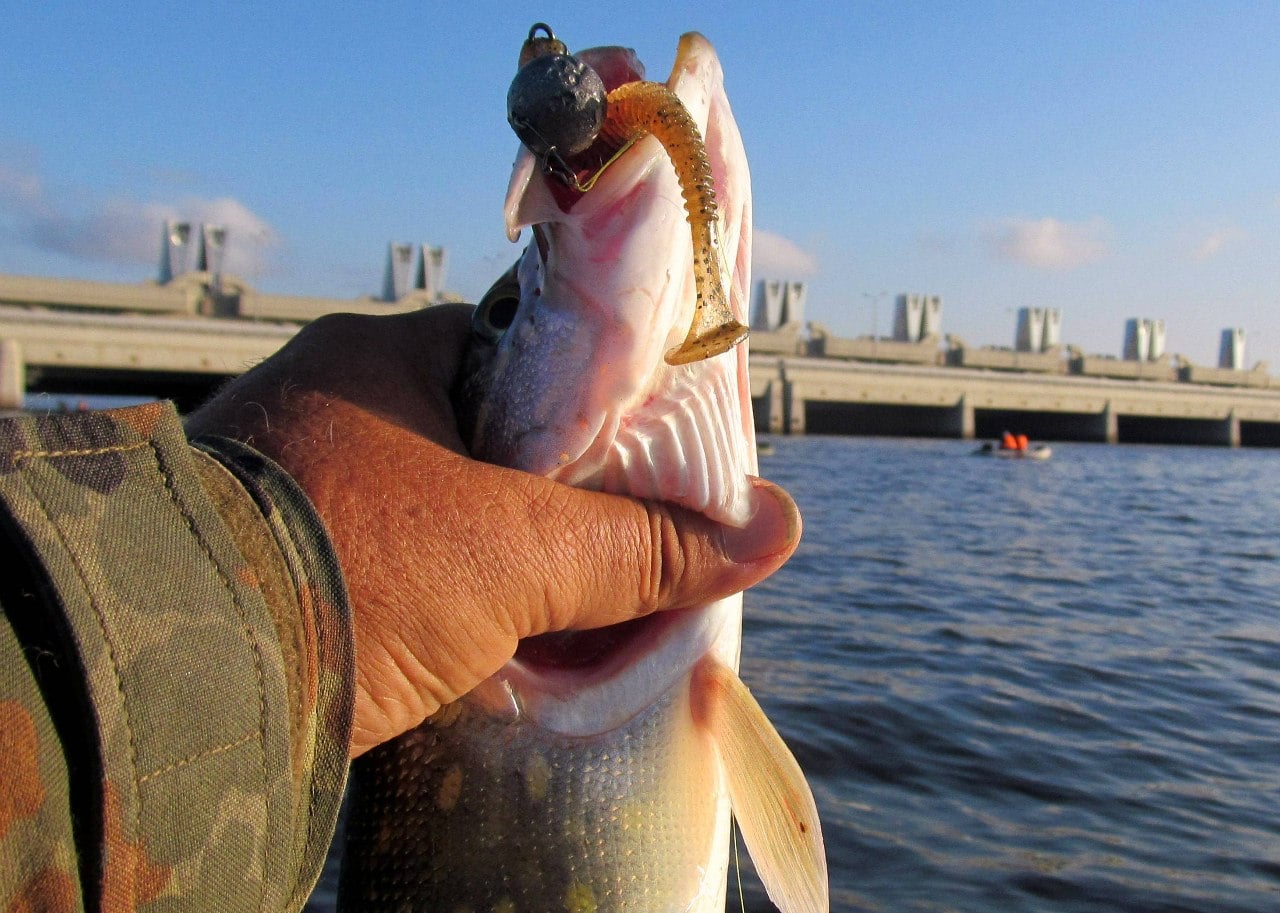 Silicone baits are increasingly being equipped on cheburashkas [/ caption] It is very convenient – you can change the bait in a matter of seconds
Silicone baits are increasingly being equipped on cheburashkas [/ caption] It is very convenient – you can change the bait in a matter of seconds
… The twister, vibrotail or silicone worm can be mounted on an offset or double hook. In the second case, the bait holds on tightly, the percentage of realized bites is higher, but hooks … can ruin the whole fishing. The opposite is true with the offset man. Its back part constantly slides off the hook step, but this can be dealt with either by attaching a special silicone stopper to the forend, or by fixing the rear end of the bait with a spring intended for this. But the percentage of bites sold will still be lower. Therefore, you have to compromise – which is more expensive: dangling baits + lost time or less fish caught. It makes no sense to spread for a long time in relation to baits. It all depends on the financial capabilities of the angler. Of course, with a weak bite, it bites better on the road, but if the bite is medium,the more budgetary Tioga from Lucky John is fine. And sometimes the foam can show quite decent results.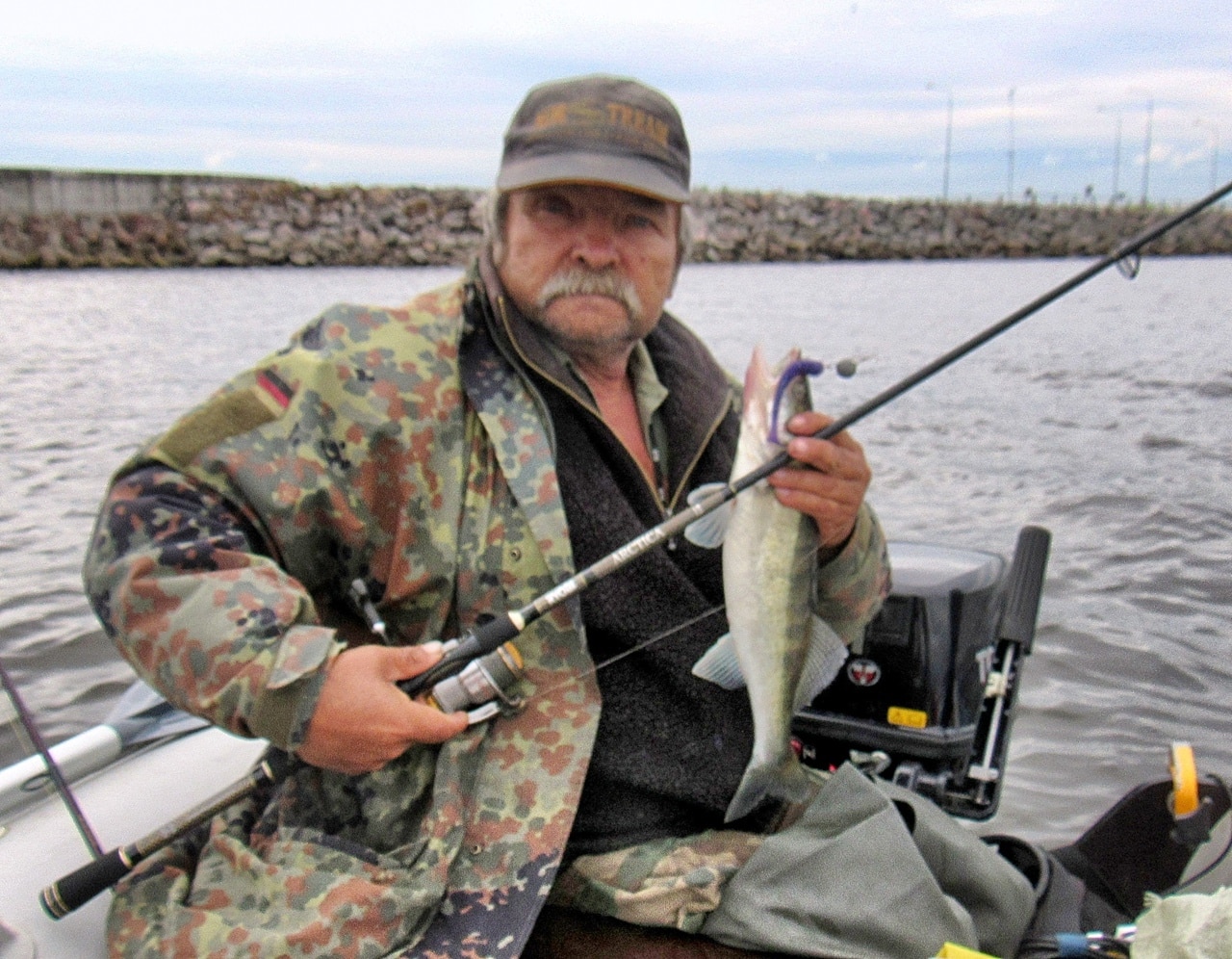 Japanese Keitech works out on zander almost always [/ caption]
Japanese Keitech works out on zander almost always [/ caption]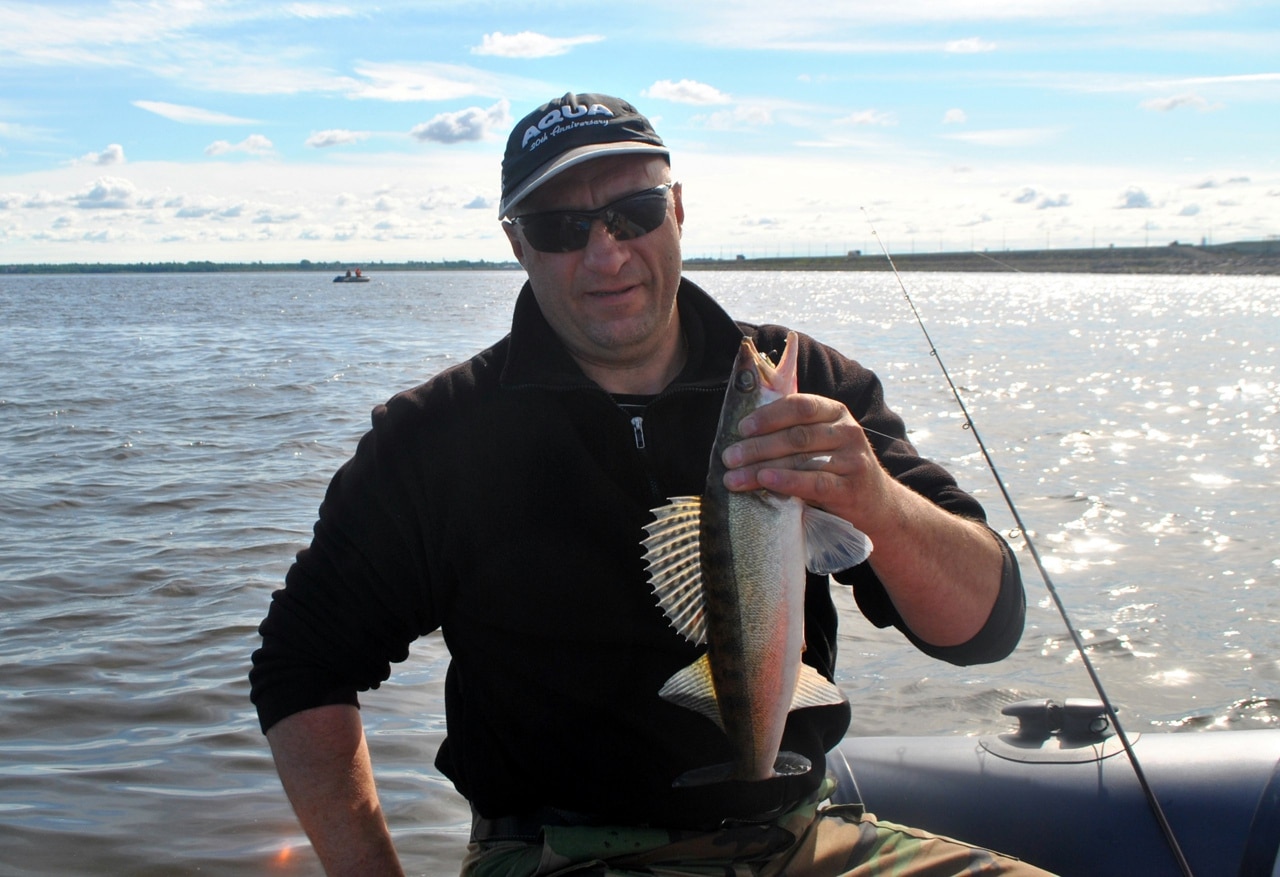 Tioga from Lucky John also works [/ caption] All of the above is applicable to fishing for zander in any waters of the Leningrad Region. The only differences will be in the weight of the cargo. The next question is what kind of rig to catch. Undoubtedly, jigging is both more interesting and dynamic, but sometimes the pike perch is more like melancholic horizontal guidance. And here you really want – you don’t want to: you have to put a
Tioga from Lucky John also works [/ caption] All of the above is applicable to fishing for zander in any waters of the Leningrad Region. The only differences will be in the weight of the cargo. The next question is what kind of rig to catch. Undoubtedly, jigging is both more interesting and dynamic, but sometimes the pike perch is more like melancholic horizontal guidance. And here you really want – you don’t want to: you have to put a
diverter leash .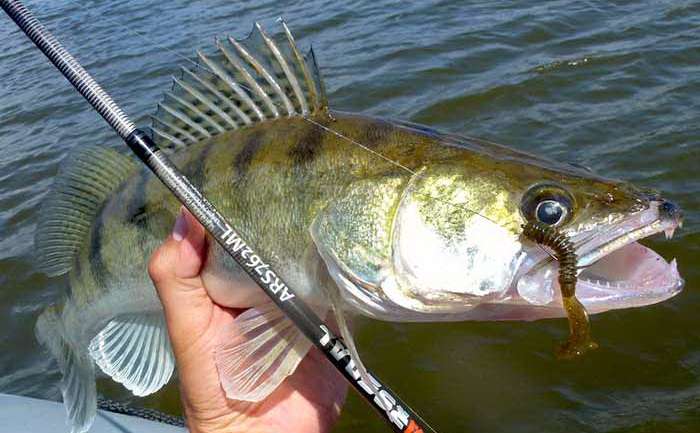
wobbler colors are as follows:
- early evening – wobblers with blue, blue, black backs;
- twilight – blue, green, wobblers with a clearly visible color;
- in the dark – “lemongrass”, “fire tiger”.
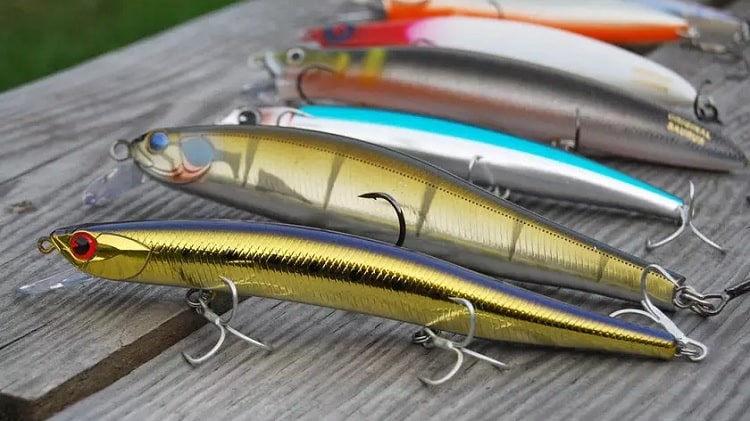
Interesting! In the Gulf of Finland, pike perch is caught on the track only in the evening, at night and in the early morning. During the day, he is passive. In other bodies of water, the fanged predator can peck at any time of the day. Jig, by the way, in the bay, he is also perfectly caught during the day.
In winter, in the Leningrad region, pike perch is caught practically only in the Gulf of Finland – in other places, rarely and little by little. Gulf of Finland on the online fishing map:
There are several places popular with goose-goers. On some you can fish all winter, on others the ice is periodically broken and you have to wait for it to get up again. Of the latter, the most popular is the section of the bay opposite the exit of the Kanonersky Canal. Here you can catch a schooling fish and catch a trophy. But pike perch does not stay here all the time.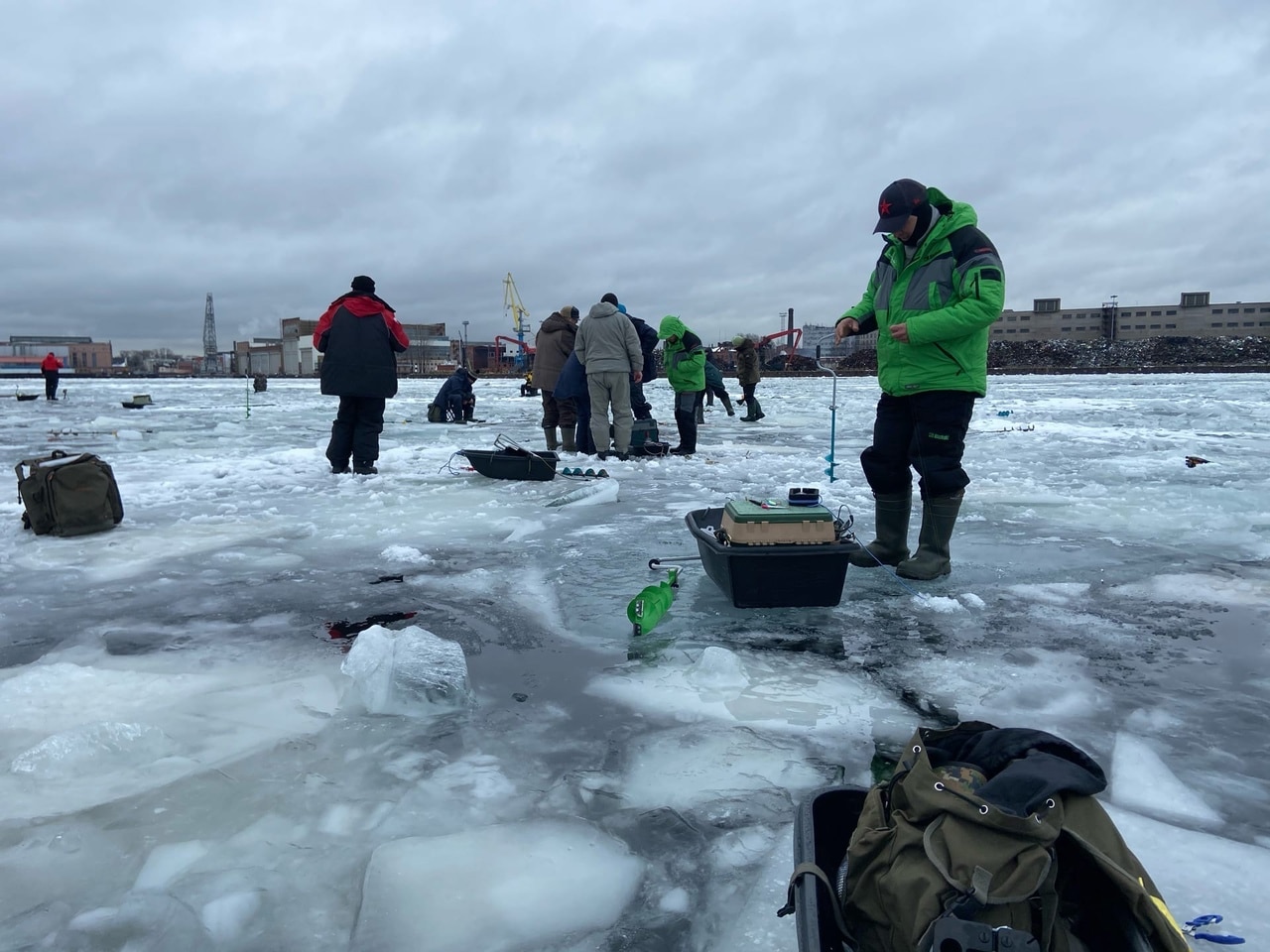 Another place is the fairway from the Seaport. It usually freezes in winter, although it gets hacked from time to time.
Another place is the fairway from the Seaport. It usually freezes in winter, although it gets hacked from time to time.
They fish from the harbor itself (although this is prohibited) and up to a distance of several kilometers along the fairway. A mass approach of zander here can happen at any moment, but after the flock is knocked out, it will take a long time to wait for a new one. It may happen that the pike perch does not appear anymore. Fishing for pike perch on the Gulf of Finland near the dam – video report: https://youtu.be/uQhv_Dxuxro And, finally, the Park of the 300th anniversary of St. Petersburg. An extensive water area with the most diverse relief, which is crossed by the freezing Petrovsky fairway. Zander can be anywhere. Success accompanies those who know the water area well and have some kind of mini-equipment for moving on ice.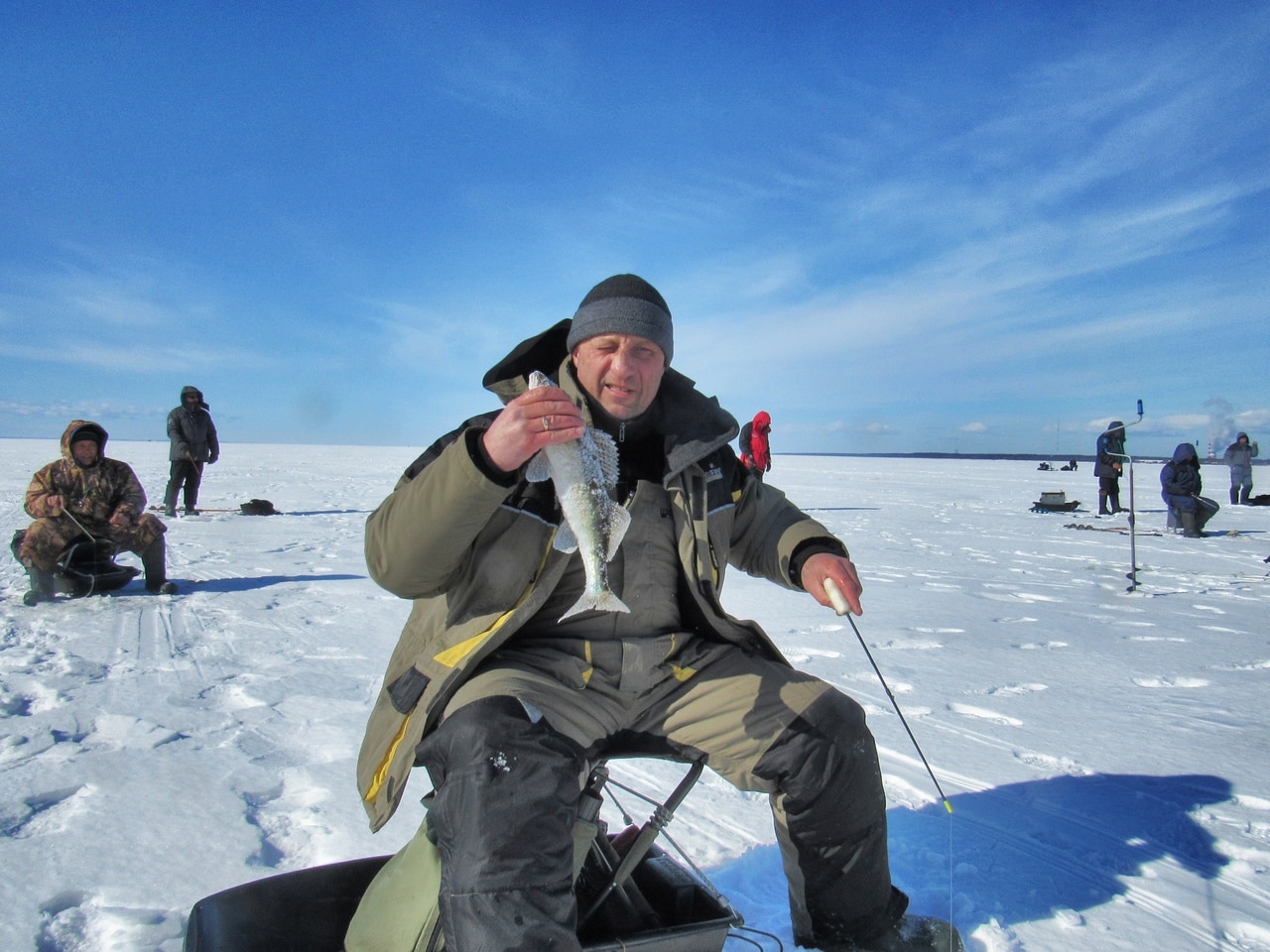 Park of the 300th anniversary of St. Petersburg [/ caption] Pike perch is constantly present in the Vyborg Bay. They catch it in different ways, in summer and winter. Pike perch, as a rule, is medium-sized.
Park of the 300th anniversary of St. Petersburg [/ caption] Pike perch is constantly present in the Vyborg Bay. They catch it in different ways, in summer and winter. Pike perch, as a rule, is medium-sized.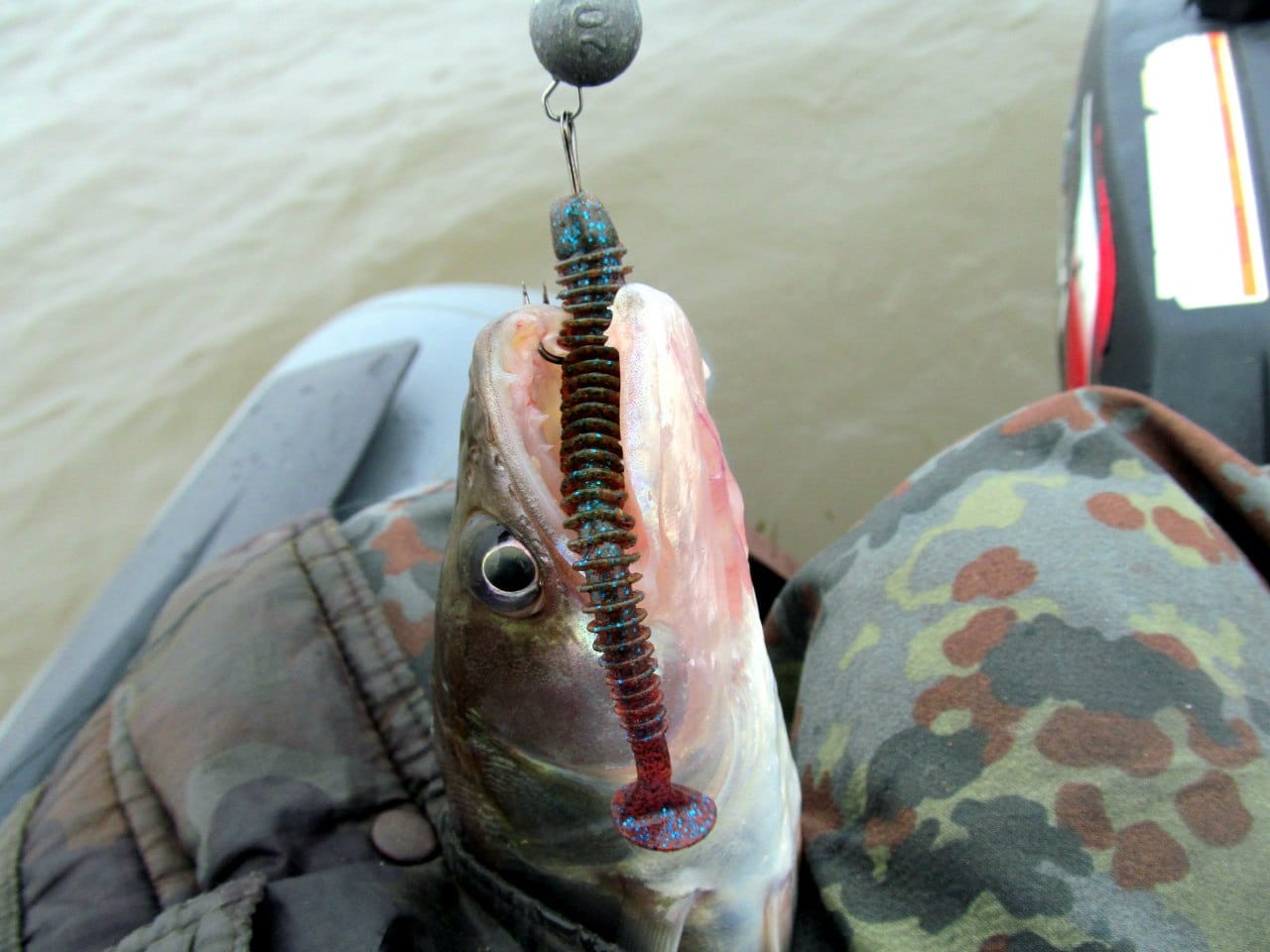 Pike perch on the Vyborg Bay [/ caption] In the summer it is often caught on the track, and, oddly enough, he prefers crank wobblers to lures of the “minnow” shape and “shad”. This is interesting – fishing for perch in the same location: https://tytkleva.net/rybolovnye-mesta/lovlya-okunya-v-leningradskoj-oblasti.htm In the fall, many anglers go to Vysotsk for pike perch. Convenient access, close distance to the place of fishing, only the fish is too small. Most fish with jigs, spaced rigs do not offer much of an advantage.
Pike perch on the Vyborg Bay [/ caption] In the summer it is often caught on the track, and, oddly enough, he prefers crank wobblers to lures of the “minnow” shape and “shad”. This is interesting – fishing for perch in the same location: https://tytkleva.net/rybolovnye-mesta/lovlya-okunya-v-leningradskoj-oblasti.htm In the fall, many anglers go to Vysotsk for pike perch. Convenient access, close distance to the place of fishing, only the fish is too small. Most fish with jigs, spaced rigs do not offer much of an advantage. 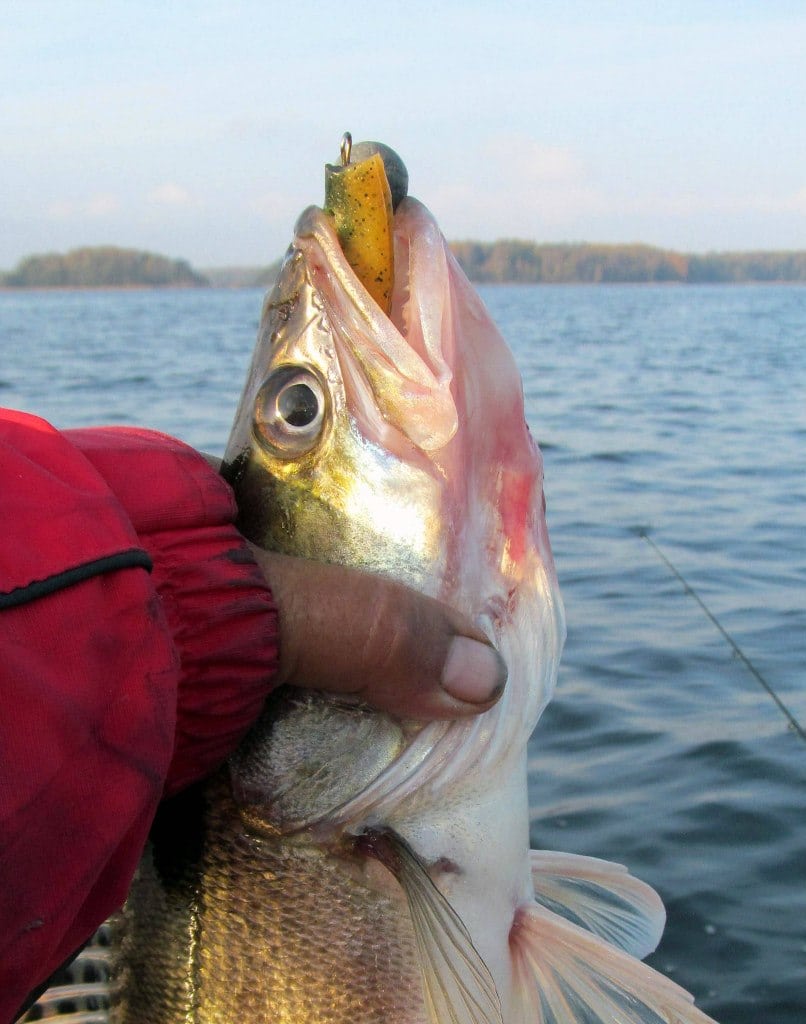 Pike perch is caught in Vysotsk, in the Vyborg Bay [/ caption] Some people catch by rafting on VIBs and quite successfully. Almost all local fishermen use bleak, and those who fish with a simple donk do much worse than those who fish with a plumb line with a jig head with the same bleak.
Pike perch is caught in Vysotsk, in the Vyborg Bay [/ caption] Some people catch by rafting on VIBs and quite successfully. Almost all local fishermen use bleak, and those who fish with a simple donk do much worse than those who fish with a plumb line with a jig head with the same bleak.
It is better to catch pike perch from ice on the first and last ice. About fishing in the Gulf of Finland, including zander – in detail: https://tytkleva.net/rybolovnye-mesta/rybalka-v-finskom-zalive.htm
Lake Ladoga – searching and catching a fanged handsome man
Biting of pike perch on Ladoga is short-lived. You can get a good bite on jig rigs in mid-June and later at the mouths of the Volkhov and Svir, but this does not happen every year. The mouth of the Svir river on the online fishing map:
After spawning in the rivers, the pike perch goes into the open Ladoga. The predator usually keeps opposite the rivers Volkhov and Syas. There he is caught by trolling at a distance of 10-15 km from the coast and at a depth of about 10 meters, but wobblers are used with much shallower depth. Weather conditions do not always allow anglers to go out into the lake, so they often return with nothing.
Interesting fact! When fishing for trolling, they look for zander with an echo sounder, looking at the water temperature sensor. The predator usually gathers where the water is several degrees warmer.
Already in August, there is no pike perch in the southern part of Ladoga. He migrates north to the Ladoga skerries. There it can also be caught and quite successfully, but this requires serious technical equipment: a large boat, navigation equipment, downrigger, boats, etc., since they are looking for a predator at depths of up to 40 meters. Fishing for pike perch in Lake Ladoga and the Svir River – video report on fanged fishing: https://youtu.be/yj69RfY7OfE
Fishing for walleye on Vuoksa is a real experience
There is pike perch in the Vuoksa River and in the lake, but it is in the river that the most worthy predators are caught. 5-8 kilograms is not uncommon even now. Fishing in the river is not easy: you need to correctly position the boat on the current, which may be the opposite, determine the optimal direction of the casts and choose the right weight of the load and the bait that the predator will like to taste. The depths can be great, and the current is strong, so what was written above about the two sets of gear is fully applicable to Vuoksa.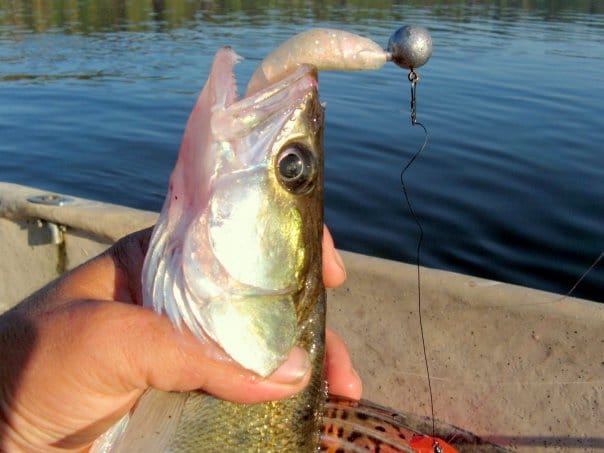 Pike perch bite in Vuoksi from mid-June to mid-late September. The rest of the time, it is inactive.
Pike perch bite in Vuoksi from mid-June to mid-late September. The rest of the time, it is inactive.
Important! The biting of pike perch and other predatory fish in Vuoksi is largely dependent on the water level, which is regulated by the Finnish neighbors with a dam. Generally, the lower the water level, the better for fishing.
Trolling in the river is usually not done because of the very difficult bottom topography. But in Lake Vuoksa, fishing on the track will be the best way to catch zander. They fish in the reaches near the banks, picking up wobblers according to the situation. The pike perch is not large, its weight rarely exceeds 1.5 kg. Pike perch fishing in the Leningrad region, Vuoksa – new report 2021: https://youtu.be/nTFrUuo-za0
Rivers
In such large and relatively deep rivers as the Volkhov and Svir, pike perch can be caught not only in the mouth after spawning, but throughout the entire channel. There are also two methods: jig and trolling. They are fished in dumps, in pits, and in other uneven terrain. There is pike perch in the Narova River, which flows along the border between Russia and Estonia, but its size is not impressive. Mass entry occurs at the mouth, but the fish are also small. The Neva, flowing in the granite shores of St. Petersburg, is rich in pike perch. Trophies are not uncommon. They catch it even higher than the city, sometimes not bad at all. In other rivers, occasionally small goose comes across.
Lakes
Pike perch lives in many lakes of the Leningrad region, but few catch it there. Firstly, the use of gasoline engines is prohibited on all lakes, and Russian fishermen have already lost the habit of paddling. It is good if there is an electric motor, which, although it is prohibited, the Fishery Supervision Service practically does not react to it. Secondly, you need to know very well the reservoir and the habits of the local pike perch. For more information about the fishing places of the Leningrad Region, see the material of our expert practitioners: https://tytkleva.net/rybolovnye-mesta/rybalka-v-leningradskoj-oblasti.htm For example, in the lake. It is gratifying to catch him on a jig at a depth of 25 meters, on the lake. Gladyshevsky, he bites only opposite the confluence of the Velikaya River, on the lake. The Krasnogvardeysky predator is caught in only one place at all. Therefore, those anglers who have mastered fishing for lake pike perch are in an advantageous position.They are not so dependent on weather conditions – after all, the lake is not Ladoga or the Gulf of Finland. They know the best weather to go fishing. They have an order of magnitude less competitors. They don’t need to experiment: put the right bait and go. In addition to pike perch, they often come across pikes and often of a good size.

